Immediately after meeting Lennart Anderson I knew I wanted to write about the experience. This post was intended to have been finished and published some time ago, but unfortunately life got in the way. For months I continued to put it off until news of his death reached me. I was overwhelmed with the compulsion to finish, not out of any new sense of timeliness or gravity, but gratitude for his contribution as a painter.
I never studied with Lennart Anderson but none the less he hovered like an umbrella over my education.
My first painting class was with Mark Pehanich who I studied with at the Appomattox Regional Governor’s School in Petersburg, Virginia. One could not ask for a better teacher. Mark never failed to be engaged and hard working with us students. For two years I painted still lives under his instruction which he largely credited to his teacher Lennart Anderson.
At the end of high school Mark introduced me to the work of his classmate Stephen Brown which inspired me to apply and attend Hartford Art School at the University of Hartford in Connecticut. Stephen, who was in what would be the final years of his life was very ill and taught with an unparalleled compassion and intensity. He became a mentor and some of my fondest memories of undergrad took place in his office discussing various artist living and past. One artist who came up repeatedly, who Stephen like Mark credited for influencing his teaching method was Lennart Anderson.
While studying at the New York Academy I spent a semester working on a Vermeer master copy at the Metropolitan Museum of Art under the guidance of Edward Schmidt. He was the first instructor at the New York Academy when it was founded in 1982. Unfortunately I did not get to know Ted as much as I would have liked but admire his work and on the few occasions in which we have crossed paths he has always greeted me with a knowing and mutual respect. He too studied under Lennart Anderson who he spoke of with honor and affection, referring to him as his beloved teacher.
So after a decade you could imagine I had grown quite curious about who Lennart Anderson was. Without ever meeting him I felt indebted to him. It wasn’t until two years after graduate school that we finally met.
This happened at Soho Art Materials. I was pricing out an order behind the register when I looked across to see an old man in a coat holding up tubes of oil paint close to the corner of his eye. Stephen once told us that his teacher suffered muscular degeneration in his eyes and a jolt went through me as I realized who I was looking at. I anxiously asked him if he was Lennart Anderson as he approached the register. He looked puzzled at first and I explained how I had become familiar with his work through his former students. It was a pleasant exchange but I failed to express my love for his paintings. Fortunately my good friend Kyle Phillips brought the sincerity as he joined the conversation, “It is an honor to meet you sir, we are huge fans of your work!”
Lennart replied with a big smile:
“I always wanted to walk into an art store and be recognized by the employees!”
Over a year later, now living in Virginia, Mark suggested that I bum a ride to New York on his next visit with his wife artist Dolly Holmes, and that while up there he would take me to visit Lennart’s Studio in Park Slope.
A few weeks later I found myself in the dim living room of a Brownstone on Union Street listening to Mark and Lennart discuss old friends and Brooklyn College. My gaze wandered around the room to beautiful portraits and landscapes I had looked at a hundred times online but had never seen in person. I wonder if my appreciation of Lennart’s hospitality was evident. I was speechless and hope my quiet admiration did not come across as boredom.
After a while Lennart suggested we head up to the studio. We made our way up the first flight of stairs and I found myself peering through a doorway at a mural on a bedroom wall. It was a pastoral scene with figures, reminiscent of the Venetian Renaissance, particularly Veronese. After patiently letting us take it in for a few moments Lennart said “I painted this for my wife” and then informed us that he needed to rest for a few minutes but that we could continue up the next flight to his studio.
In the hall of the final set of stairs was one of his Idylls depicting two reclined figures, one female and one male (which I later learned were Jupiter and Antiope), in a darkened wooded space. I was struck by its smokey labored impressionistic beauty. There was a poetic quality that could only be achieved through humility. Lacking in pretension the painting was developed to a point of articulate expression and left in a state juvenile artists may mistake as unfinished. As Stephen Brown had so often told my senior painting class, “No Bells and Whistles!” I wonder if this was something Lennart had imparted on him.
As Mark and I entered the studio the dim brownstone gave way to a luminous white space. Under a skylight what I remember sounding like Baroque music gently played from a CD player that he had left on, and paintings in various stages were set around including another beautiful large Idyll of three women in a landscape. On a table top near by were xeroxes of old figure drawings. I wanted to take pictures but photographing his studio felt like an invasion of privacy and i was unwilling to even ask.
After a short while Lennart joined us and began explaining how he paints given the degeneration of his vision. Relying on his peripheral vision he described himself a a bird soaring around a mountain darting at the subject here and there but never looking directly.
After that he explained his process of building paintings out of years of accumulated figure studies. I was shocked by how little source material he used. It was a leap of faith which I would honestly be terrified to make.
And as the conversation turned to drawing I realized that in this perilous inductive free for all he maintained his path through simple principles of deduction. One principle, which Mark had taught me in high school, was to begin with similarities and then move towards the subtle differences. The other principle was to find the highest, lowest, and center point of a form and from there to triangulate the rest, being careful to respect the three initial points. Both of these principles can be described as moving “from the general to the specific” (a discipline which I struggle to articulate the importance of to my current students with all their impatience and anxiety).
He pointed at an anatomical anomaly in the squared shoulder of one of the figures he was painting and spoke of the things you see in nature when you truly look that you could not have conceived of independently. Then standing intimidatingly close to me he said:
“It is a shame you must carry the burden of having studied at that school. It teaches you to tell the subject what it is, but when you paint you do not tell nature, you ask. You don’t tell! You ask!”
The words were cutting and although not a fair assessment of the New York Academy, which at its best synthesizes a multitude of methodologies, were an honest critique of academic thinking in art. Now etched deeply in my mind these words are a guiding reminder of the humility needed to make great art. As of lately my own methods are evolving and although the causes are many I know this discussion with Lennart is of great significance.
After speaking a short while longer under his skylight Lennart had plans with his family to prepare for and walked us down the long corridor of stairs to the front door. And then we left with a warm departure.
In a review of an exhibition of Lennart’s Idylls in 2001 the art critic Hilton Kramer wrote:
“In a saner art world than ours, museums would be vying for the honor of mounting a major retrospective of Mr. Anderson’s work, but that is not something likely to happen anytime soon.”
Unfortunately he is right. Lennart himself mentioned to Mark and I that his work no longer sold. But now a few months after our meeting, and ten days after his death, I think back on all the brilliant artist I studied with during those 10 years of instruction and how they too were so influenced by him. I think of how after years of teaching at Brooklyn College there must be people all over like us, under his umbrella of influence. And I think about how these lessons will be passed on to a new generation of artists by us someday. What a wonderful legacy.
For more on Lennart Anderson, I highly recommend the following links:
Lennart Anderson, a website full of images of his work in chronological order
Painting Perceptions: Seeing along the Periphery, Getting at the Essence, an interview with Lennart Anderson
Lennart Anderson: Seeing with Light, a beautiful short film about the artist and his work
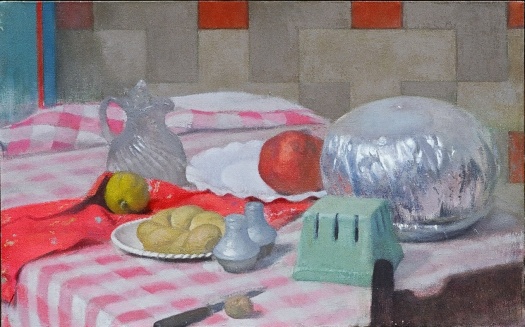

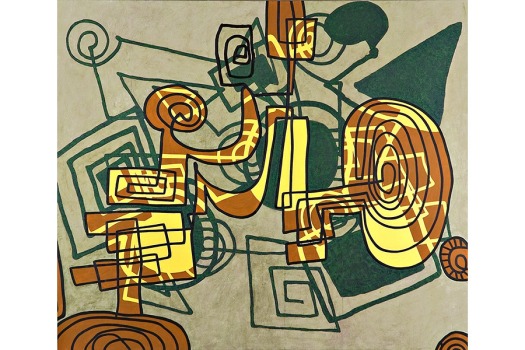
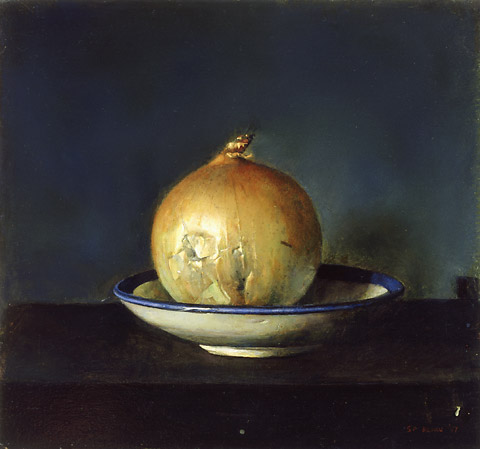
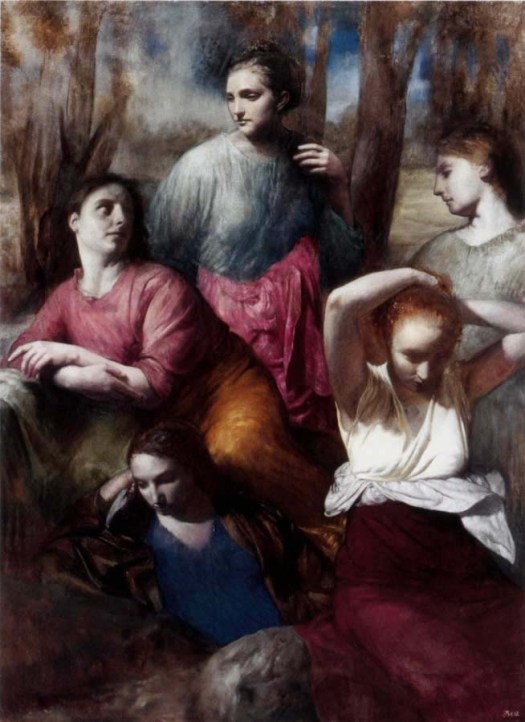

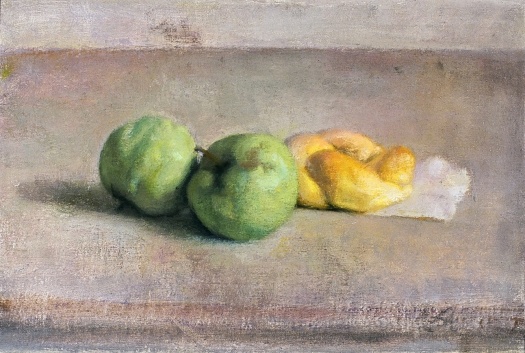
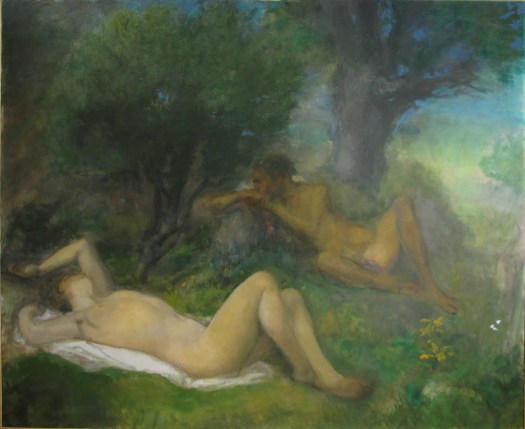
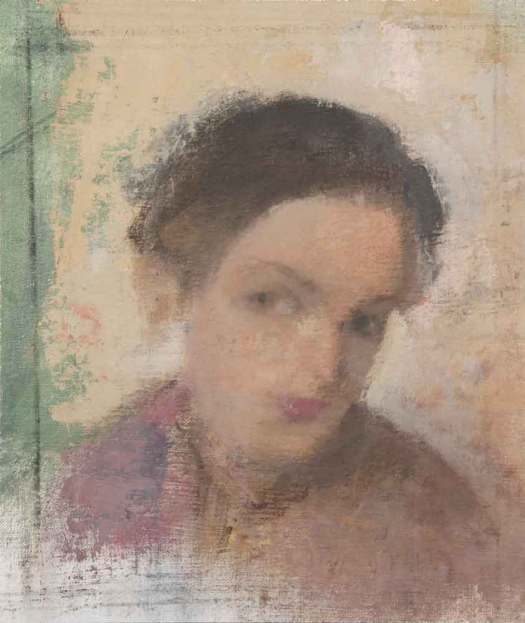
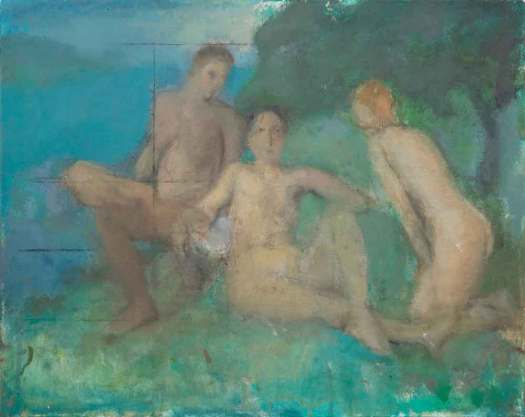
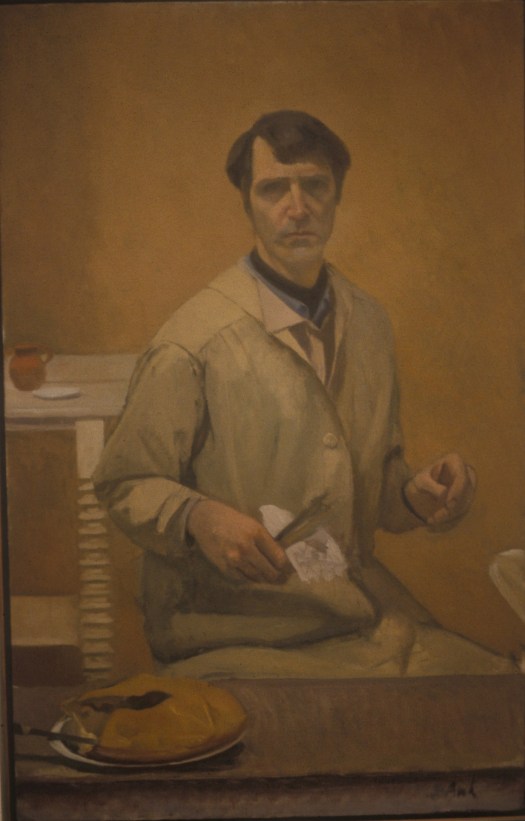
It must takes bounds of confidence in order to be so humble. I mean, the whole “no bells and whistles” philosophy is a great lesson to all artists new and experienced. I feel like that’s the type of work that helps people. Its confident humility, not fireworks, that lets a work speak for itself. Amazing paintings, I’m glad you wrote about him.
oh, I meant to take that ‘must’ out of the first sentence. Always proofread guys.